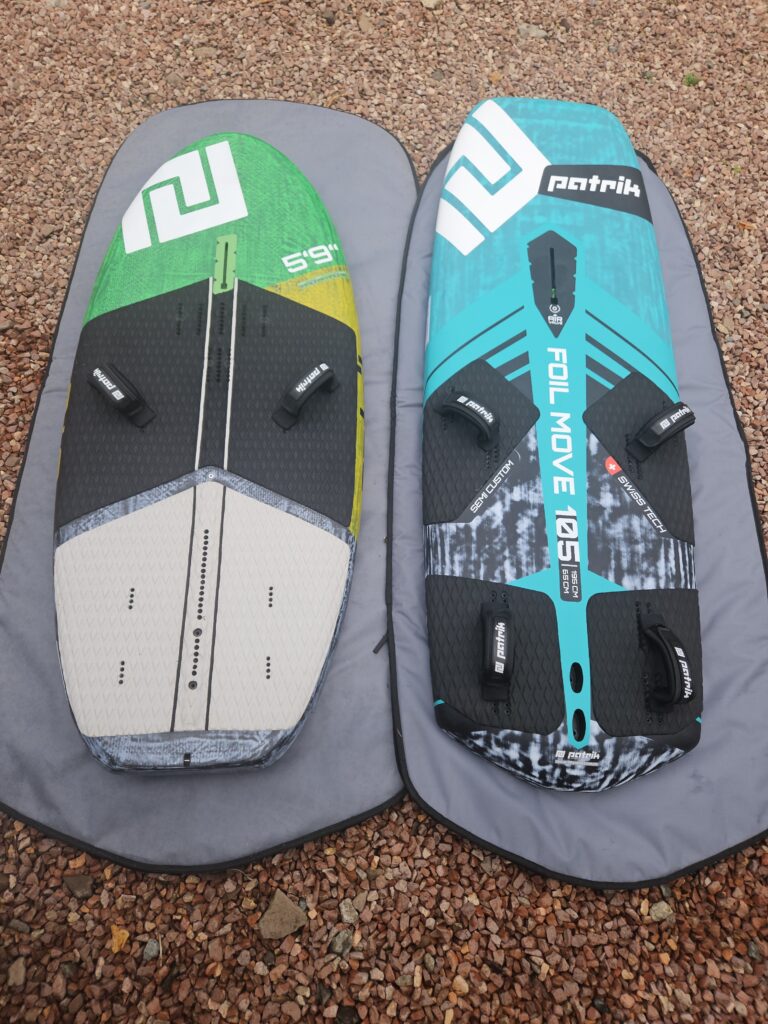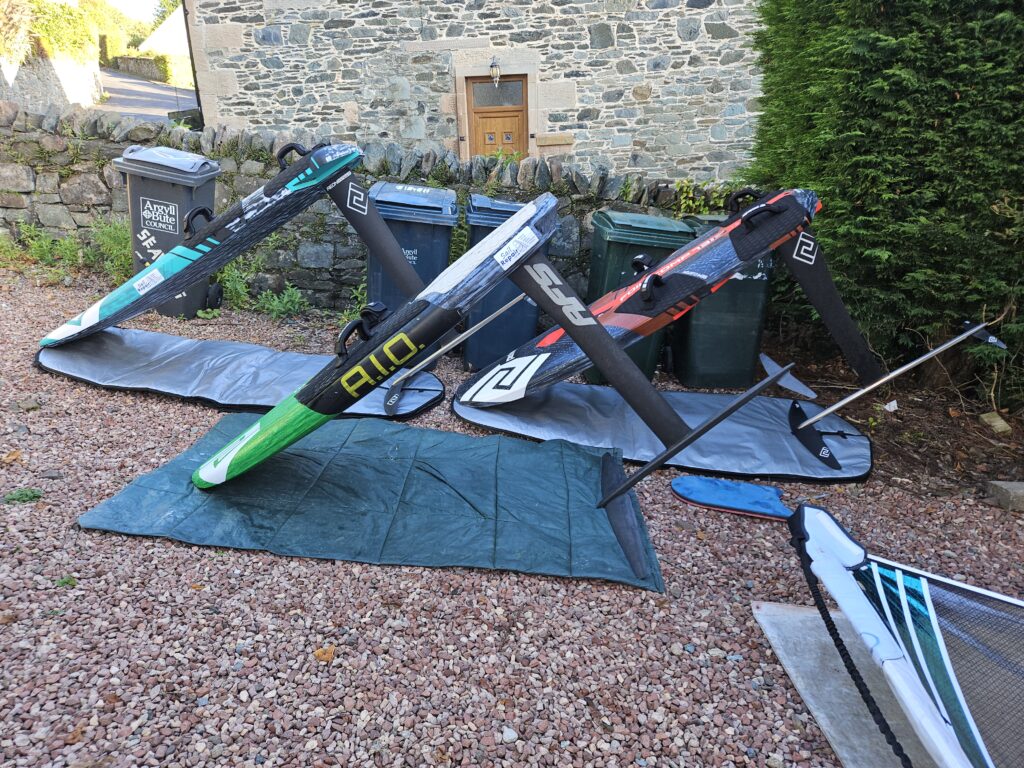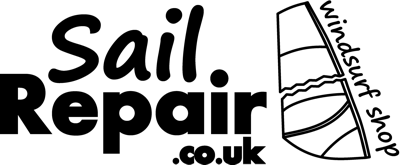Patrik AIO vs Patrik Foil Move.

Please read this in conjunction with this video Patrik AIO vs Foil Move
Size – It is actually quite hard to compare the two size wise.
AIO 175 x 72cm and 115 ltrs
Foil Move 195 x 65cm and 105lts.
They both offer a similar amount of buoyancy but in different ways. I have lost a bit of insulation and have dropped from nearly 100kg to 92kg and for boards of this size it has made things easier. When uphauling the short length of the AIO means it feels like it has no nose and you have to stand well back. That means when uphauling the board is turning into the wind so you need to be quite quick in pulling the sail up. It offers buoyancy in a “corky” way. By comparison the Foil Move feels more settled in the water and while theoretically offering less volume it feels more stable, sinking into the water rather than floating on top.
Both boards are a bit easier to waterstart especially the Foil Move as their tails do sink down a bit as you get up making it less of a step up compared to larger windfoil boards. Obviously both boards are easier to carry when connected to a rig than larger windfoil boards.
Whilst moving on the AIO you need to keep that nose up. Its the same on the Foil Move but when standing further back on the foil move the tail will go down thus lifting the nose. On the AIO the board can remain level despite a reward stance.
Take Off
The shorter length of the AIO means it takes a bit more effort to get up to take off speed but it also depends on the sea state. In choppy water short boards in general can tend to get stuck in the trough between the waves, The secret is to get a helping shove from a bit of chop to get the boards to fly. The light weight and lively nature of the Foil Move can see it take off in surprisingly little wind.
In Flight
While the AIO is wider the footstraps are actually wider apart on the Foil Move. On the AIO your feet are flat, on the Foil move your heel is lower. That coupled with the mastfoot being 10cm closer to you on the AIO means it is easier and more comfortable on the Foil Move if you have plenty of power from your sail. Talking of sail power I find the Foil Move comfortable with sails up to 6.5 and the AIO being best with sails up to 5.8. Both boards benefit from a light rig. The sail used in the video is a custom 2 cam 6.3 and is very light.
I really thought I would like the single back strap on the AIO but I found it got in the way more than wide apart double back straps.
If you are used to bigger wind foil boards, when you first get on the Foil Move it is a very similar feeling to getting on a wave board after being on a 130ltr freeride board. It feels small and responsive. The AIO feels very different with a buoyant “corky” nature.
As mentioned in the video, with virtually no nose on the AIO it makes any over foiling type drops hard to survive. The good thing about both boards is that they tend to bury their nose deep into the water which means you don’t damage them.
Gybeing
Both boards gybe well, the nimble nature of the Foil Move makes it easy to make height adjustments as necessary allowing you to gybe in lighter winds.
Overall
So when does the fun begin with these boards? I would say that you want 10 kts with the Foil Move and about 13kts for the AIO.
In the video both boards are being used with a high aspect 900 wing. My feeling is that the AIO would benefit more from a slightly less racey foil while the Foil Move is very happy with a high aspect wing.

